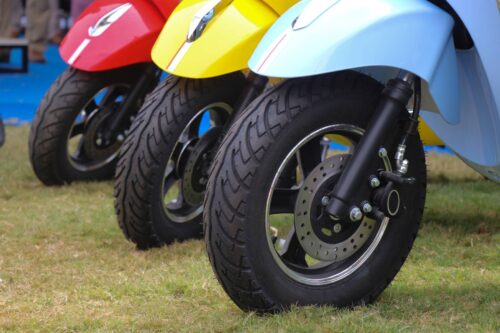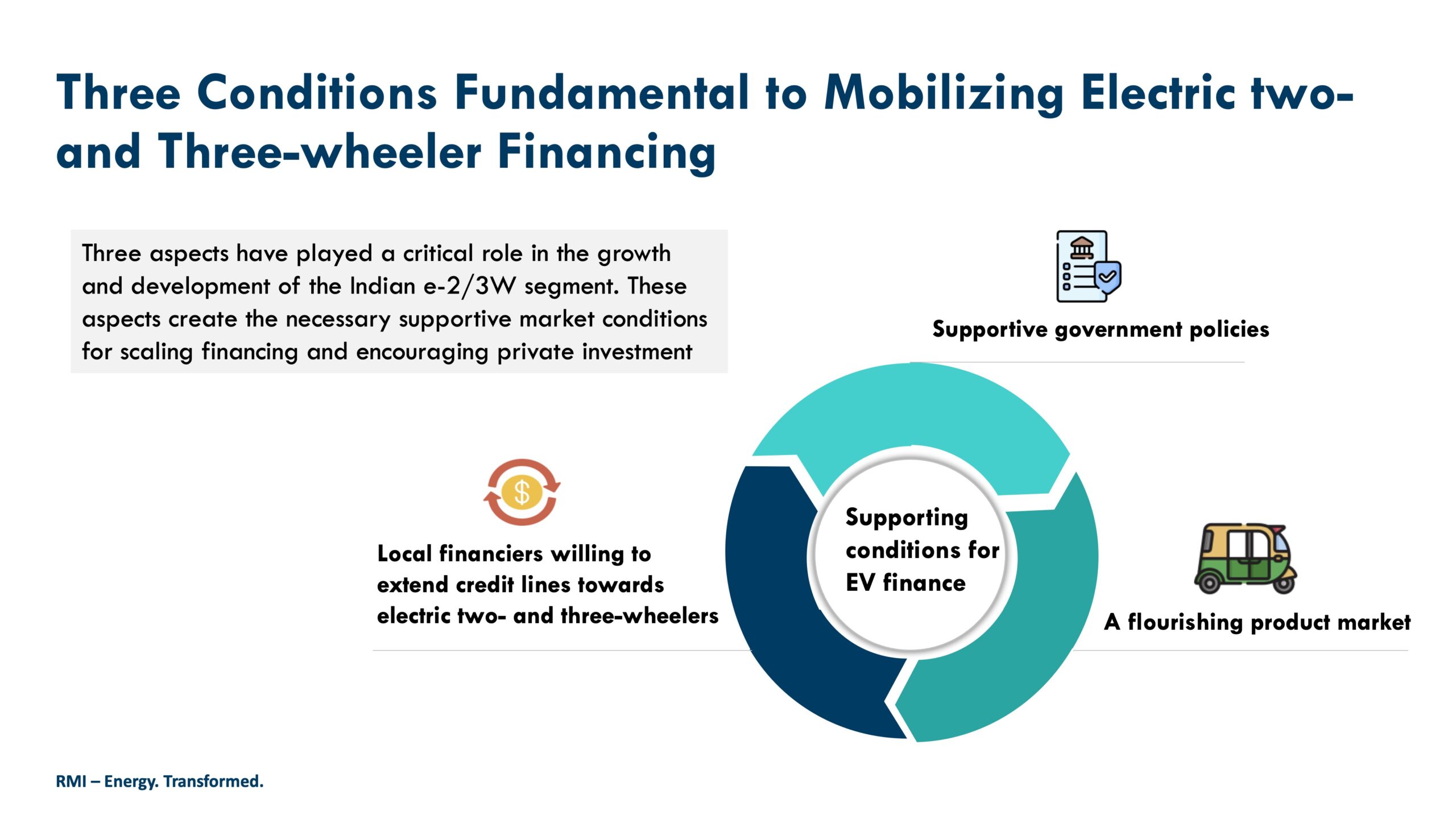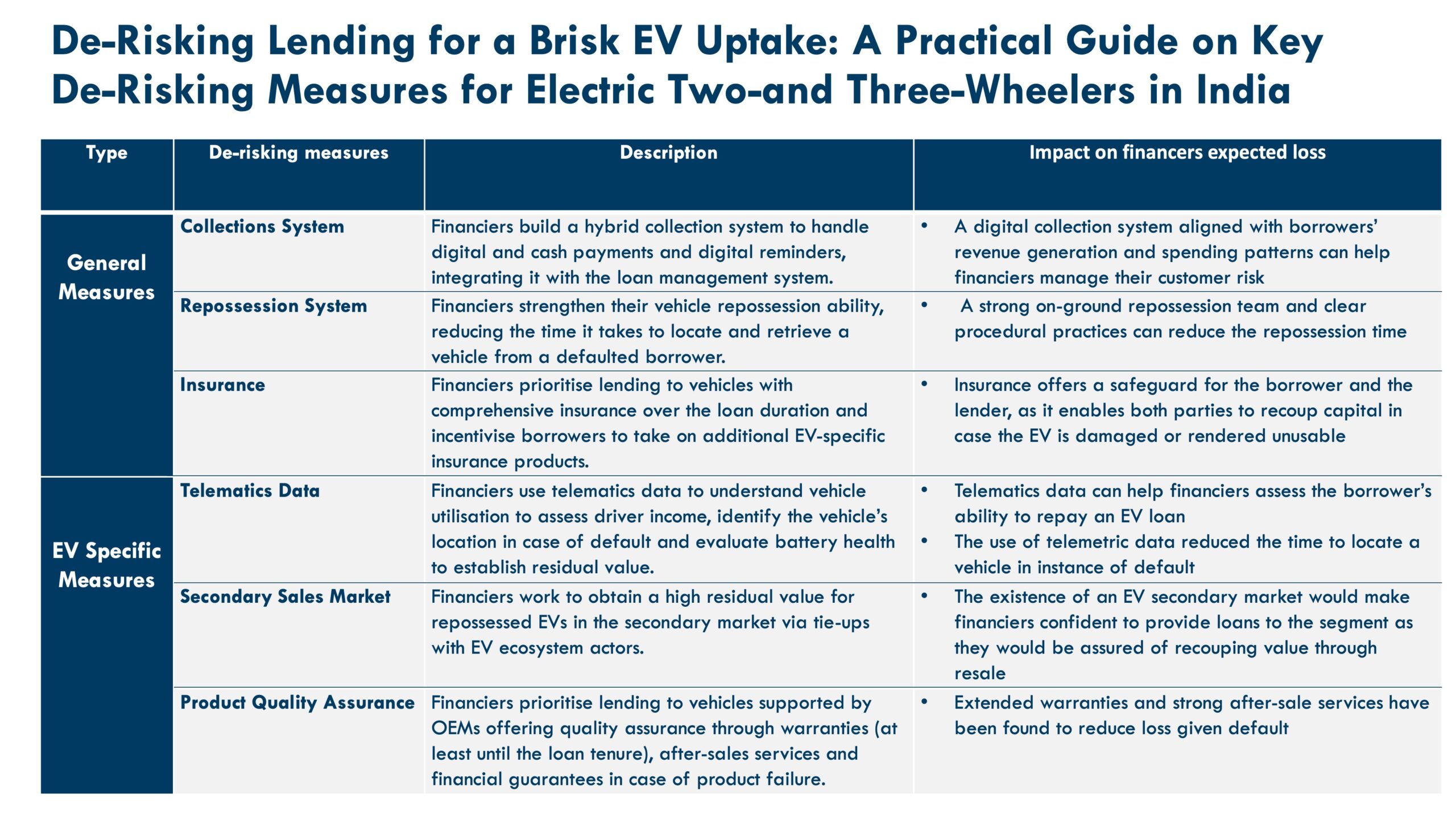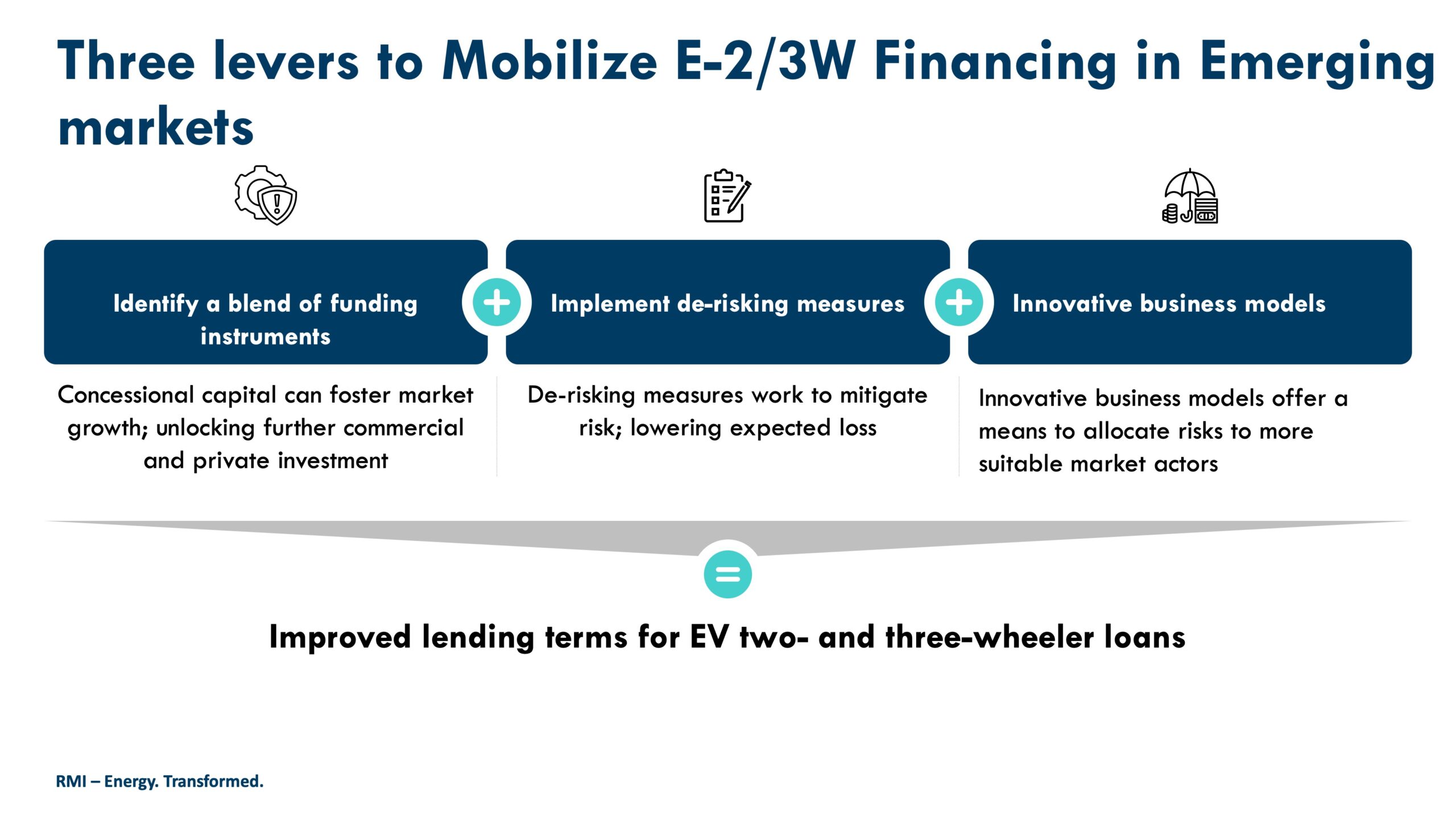
Unlocking Low-Cost Lending for Electric Two- and Three-Wheelers
How India’s three-pronged strategy to fund, manage, and distribute the financial risk of lending can be a model for accelerating the transition to electric mobility.
The global shift to electric two- and three-wheelers is vital for environmental and equity reasons. These vehicles play a crucial role in transporting both people and goods worldwide.
However, despite growing interest in electric vehicles (EVs), their adoption rate must accelerate to meet air quality and climate goals. A significant barrier to this is the steep financing costs compared to traditional internal combustion engine (ICE) vehicles. Currently, interest rates for electric two- and three-wheelers are twice as high as ICE equivalents, undermining the economic argument for transitioning to EVs. High EV perceived and real risks largely drive high-interest payments. When the perceived risk associated with operating, maintaining, and utilizing EVs combines with the risk of new-to-credit customers, it results in adverse outcomes, including higher interest rates, reduced loan-to-value ratios, and shorter loan terms for EV borrowers, impeding their access to cleaner transportation options.
In the broader context of the energy transition, electrifying two- and three-wheelers (e-2/3Ws) offers a significant opportunity for large-scale impact by the end of the decade. Achieving 100 percent market share in this sector could greatly benefit the climate, livelihoods, and air quality. However, this opportunity is not guaranteed and must be actively pursued.
A series of strategic interventions — deploying concessional finance instruments, derisking measures, and business model innovations — can unlock broader access to e-2/3W financing, benefiting low-income e-2/3W wheeler borrowers. Below, we explore how innovations in financing have been crucial in driving the adoption of e-2/3Ws in India, offering valuable insights for other South Asian and Southeast Asian countries tackling similar energy security and environmental issues.
Supportive conditions set the stage
In 2023, e-2/3W sales reached a 5.3 percent sales penetration in India, representing 170 percent compound annual growth rate over a three-year period. While e-2/3Ws are still a nascent asset class, three factors have created the preconditions necessary to drive greater e-2/3w adoption and mobilize capital flows toward the segment. The first is supportive government policies such as Faster Adoption and Manufacturing of (Hybrid &) Electric Vehicles in India (FAME I and II) generating clear market signals and incentives for the manufacturing and adoption of e-2/3Ws. The second is a robust product market and access to domestically manufactured vehicles or e-2/3W modes with relatively low import tariffs stabilizing supply. The last feature is the existence of local financing institutions that cater to regional markets and are willing to provide vehicle and small business loans to the everyday consumer. Local financiers (i.e., non-banking financial companies) are familiar with lending to new–to-credit customers and have more recently started extending credit lines to e-2/3W low-income borrowers.

Three reinforcing approaches
India is using a three-pronged strategy to fund, manage, and distribute the financial risk of lending, owning, and operating e-2/3Ws.
1. Concessional finance debt, or equity offered at a below-market rate of return by concessional capital providers such as philanthropists and multilateral development banks, can attract additional commercial investment when the perceived risks of investment in the e-2/3W sector are high.
For example, The Small Industries Development Bank of India (SIDBI) and the Shell Foundation have collaborated to launch a $6 million partial risk-sharing facility to enhance access to finance and accelerate the adoption of electric two- and three-wheelers throughout India. SIDBI and the Shell Foundation will each contribute $3 million. Financiers have to cover the first 3 percent of their losses. Beyond this, the facility will support financiers by covering 75 percent of the next share of the losses.

2. Derisking measures can effectively distribute liability and build market confidence, creating a stable and favorable investment environment. These can be 1) measures commonly adopted across financial sectors tailored to the EV sector and 2) measures specific to the e-2/3W industry. The table below presents six derisking measures, elaborated in detail in RMI’s latest report in collaboration with NITI Aayog and SIDBI, Derisking Lending for a Brisk EV Uptake.

3. Specific business models: the employment of specific business models can reallocate financial risks and mobilize investments by conducting business in a manner that more equitably shares risk among financiers, fleet operators, OEMs, and end-consumers. Leasing is a simple example of an effective business model that removes the capital cost barrier by distributing the initial capital cost to predictable annual costs over the vehicle ownership period, making e-2/3Ws more accessible to a broader range of consumers and borrowers.
Leveraging these strategies to mobilize financing and derisk the segment has significant financial implications for end borrowers and new-to-credit customers. For example, in the case of electric cargo three–wheelers in India, the implementation of derisking measures alone can save more than US$250 in interest payments over the lifetime of the loan. Scaled market-wide, this could lead to cumulative interest payment savings of US$267 million for electric commercial three-wheeler borrowers by 2030, conservatively assuming a 60 percent market share is achieved by that time.
What will it take to achieve affordable financing for borrowers
To reduce and manage e-2/3W lending risks, public and private stakeholders within the e-2/3W ecosystem should work collectively to identify how financial instruments, risk reduction measures, and strategic business models can work to mobilize financing and better manage market risks.

The identified financing levers are customizable and can and should be adapted to the unique characteristics of each local context, addressing the specific nuances of South Asia and Southeast Asia regions. This approach enables financiers and market participants to test out targeted financial instruments and risk mitigation measures, evaluate their effectiveness, and adjust them as needed according to the financing requirements and the level of market development.
The combination of levers can create a positive ambition loop, where diminished risk facilitates greater access to affordable finance, further diminishing perceived risk and supporting faster uptake of electric two- and three-wheelers. By working together, stakeholders can pool resources, share knowledge, and develop joint strategies to create a more resilient and conducive environment for the e-2/3W market. This unified front mitigates risks and accelerates the transition to electric mobility, benefiting industry and society.
